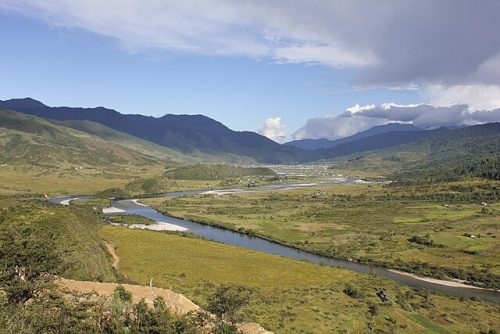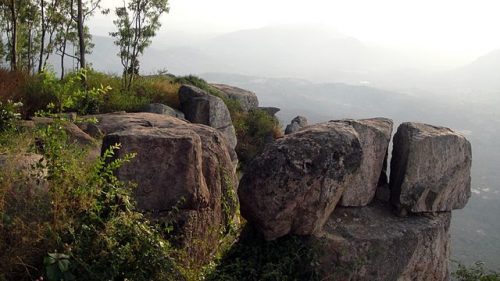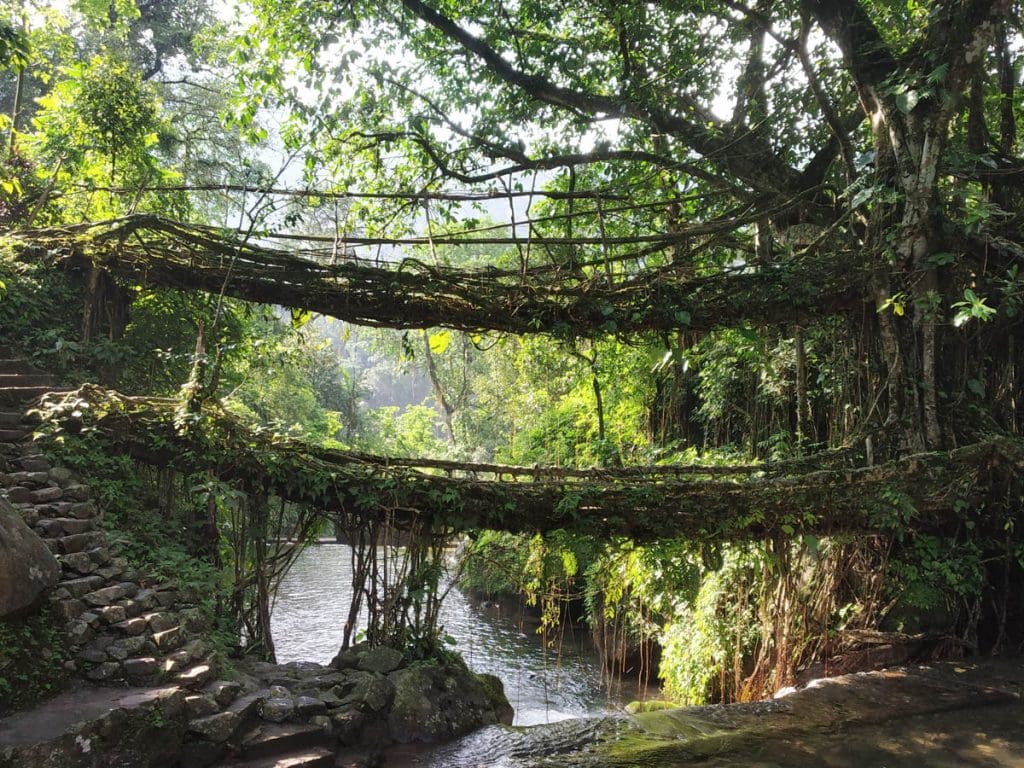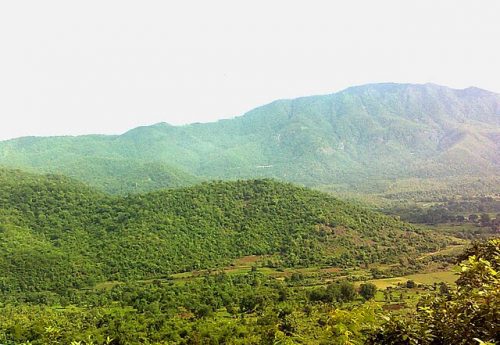Ready to explore places most travellers haven’t even heard of yet? India offers an abundance of lesser-known travel spots to discover – spots that promise to take your next trip to the next level!
From high-altitude deserts to serene river islands, these destinations will allow travellers to experience India in all its untouched glory. Here’s a breakdown of important notes for each destination expected to captivate travellers in 2024-2025:
Mechuka, Arunachal Pradesh: India’s Unexplored Frontier
Mechuka, located in the far reaches of Arunachal Pradesh near the Indo-Tibetan border, is a hidden paradise that few travelers have discovered. Surrounded by snow-capped peaks and nestled in the folds of the Siang River Valley, Mechuka offers a stunning mix of natural beauty and cultural intrigue.

This remote village is home to the Memba tribe, whose Tibetan Buddhist traditions can be seen in the monasteries that dot the region, including the 400-year-old Samten Yongcha Monastery. Visitors are welcomed with open arms and can immerse themselves in the local way of life, from savoring traditional Memba cuisine to learning about their rituals and folklore.
Mechuka’s untouched landscape is perfect for trekking, and there are numerous trails that lead to pristine forests, hidden waterfalls, and panoramic viewpoints. For adventure enthusiasts, the river offers opportunities for rafting, and the rugged terrain is ideal for off-roading.
Mechuka’s remoteness is what makes it so special—travelling here feels like stepping into another world, where time moves slower, and nature reigns supreme. As more travellers seek out destinations that are untouched by mass tourism, Mechuka is poised to become one of India’s most coveted off-the-beaten-path locations.
- How to Reach: Fly to Dibrugarh Airport (Assam) or take a train to Silapathar, followed by a long drive (10-12 hours).
- Best Months to Visit: October to April (pleasant weather for exploring the valley and mountains).
- Unique Attractions: Samten Yongcha Monastery, traditional Memba villages, snow-capped Siang River Valley.
- Adventure Activities: Trekking, river rafting, off-roading, interacting with local Memba tribes, and exploring nearby forests.
Lambasingi, Andhra Pradesh: The Kashmir of South India
Lambasingi is a unique hill station nestled in the Eastern Ghats, often referred to as the “Kashmir of Andhra Pradesh” due to its chilly temperatures and misty landscapes. What makes this village special is that it’s the only place in South India where temperatures can dip below zero, creating a rare winter wonderland in a typically tropical region. Visitors are greeted by the sight of coffee and pepper plantations that stretch over rolling hills, creating a carpet of green punctuated by tall, majestic trees.

The beauty of Lambasingi lies in its simplicity and serenity. Unlike more commercialized hill stations, Lambasingi remains relatively untouched, offering a peaceful escape from the hustle and bustle of urban life. The locals are involved in farming and small-scale agriculture, and visitors can take guided tours of the plantations, learning about the cultivation of coffee, pepper, and apples, which thrive in the region’s cool climate. The misty mornings and the crisp mountain air make this destination ideal for those seeking solitude or a romantic retreat in nature.
- How to Reach: Fly to Visakhapatnam Airport, followed by a 3-hour drive.
- Best Months to Visit: November to January (cold weather, foggy mornings).
- Unique Attractions: Coffee and spice plantations, misty hills, apple orchards.
- Adventure Activities: Nature walks, plantation tours, birdwatching.
Mawlynnong, Meghalaya: Asia’s Cleanest Village
Mawlynnong is not just a visual treat, it is a model for sustainable living. Awarded the title of “Asia’s Cleanest Village,” this hidden gem in Meghalaya reflects the Khasi tribe’s deep-rooted respect for nature and community-driven environmental practices. The villagers here have taken it upon themselves to keep the streets spotless, and the use of bamboo dustbins and a ban on plastic are testaments to their dedication to eco-friendly living.

Beyond its cleanliness, Mawlynnong is famous for its living root bridges—ingenious natural structures that are formed by guiding the roots of rubber fig trees across rivers. These bridges take decades to grow and are a fascinating example of how humans can work with nature rather than against it. The most famous of these is the nearby “double-decker” root bridge, which is a marvel to behold.
For visitors, Mawlynnong offers a tranquil escape into nature, with mist-covered hills, waterfalls, and lush greenery all around. A short trek through the surrounding forests will take you to stunning viewpoints where you can gaze out over the plains of Bangladesh in the distance. For those interested in culture, interacting with the local Khasi people and experiencing their matrilineal society is a unique and enriching experience.
- How to Reach: Fly to Shillong, then a 3-hour drive from there.
- Best Months to Visit: October to April (post-monsoon for clear skies and lush surroundings).
- Unique Attractions: Living root bridges, Mawlynnong Waterfall, clean village experience.
- Adventure Activities: Walking tours, exploring root bridges, cultural immersion.
Tirthan Valley, Himachal Pradesh: A Paradise for Nature Lovers
Tirthan Valley is a hidden paradise in Himachal Pradesh that offers visitors a chance to reconnect with nature in one of the most pristine and untouched regions of India. Part of the Great Himalayan National Park, a UNESCO World Heritage Site, Tirthan Valley is a nature lover’s dream. The valley is blessed with lush green meadows, towering deodar trees, and the crystal-clear waters of the Tirthan River, which runs through the heart of this tranquil region.

What sets Tirthan Valley apart from more popular tourist spots in Himachal is its raw, untouched beauty. There are no bustling markets or luxury resorts here—just quaint homestays, guesthouses, and campsites that allow travellers to immerse themselves fully in the natural surroundings. The valley is perfect for those who want to escape the crowds and enjoy peaceful walks along the river, trout fishing in the streams, or trekking through alpine forests and remote villages.
The valley also serves as the gateway to some of the most scenic trekking routes in the region. The trek to Jalori Pass is a popular one, offering panoramic views of the surrounding peaks and valleys, while the Serolsar Lake trek takes you through dense forests to a serene, high-altitude lake. Wildlife enthusiasts will also be thrilled with the opportunity to spot rare species like the snow leopard, Himalayan brown bear, and blue sheep within the national park.
- How to Reach: Fly to Bhuntar Airport (Kullu), then a 2-hour drive.
- Best Months to Visit: March to June and October to November (perfect for trekking).
- Unique Attractions: Great Himalayan National Park, riverbank camping, traditional villages.
- Adventure Activities: Trekking, fishing, wildlife spotting, river rafting.
Daringbadi, Odisha: The Hill Station of the East
Daringbadi is often referred to as the “Kashmir of Odisha,” and for good reason. Located in the eastern part of India, this little-known hill station offers a refreshing escape from the sweltering plains with its cool climate, verdant forests, and rolling hills. Daringbadi is one of the few places in Odisha where you can experience sub-zero temperatures during winter, and the misty mornings and lush greenery give it an almost ethereal feel.
The hill station is surrounded by dense pine forests, coffee plantations, and several stunning waterfalls, making it a great destination for nature lovers. Coffee lovers will particularly enjoy visiting the plantations and learning about the coffee-growing process, which thrives in Daringbadi’s cool climate. The landscape is also dotted with tribal villages, providing an opportunity for visitors to engage with the local tribal communities and gain insights into their traditional way of life.
Despite its beauty, Daringbadi remains largely off the tourist radar, making it an ideal destination for travelers who want to explore an unspoiled hill station away from the crowds. It’s also an excellent base for day trips to nearby attractions like Belghar Wildlife Sanctuary, where you can spot elephants and other wildlife.
- How to Reach: Fly to Bhubaneswar, followed by a 6-hour drive.
- Best Months to Visit: September to March (cooler temperatures, pleasant weather).
- Unique Attractions: Pine forests, coffee plantations, waterfalls, tribal culture.
- Adventure Activities: Nature walks, exploring waterfalls, cultural tours.
Araku Valley, Andhra Pradesh: A Coffee Lover’s Paradise
Araku Valley, nestled in the Eastern Ghats, is a scenic hill station that offers a perfect blend of nature, culture, and adventure. Famous for its coffee plantations, this valley has become a favourite spot for coffee connoisseurs and travelers who wish to explore the tribal heritage of the region. The crisp mountain air, lush green forests, and misty hills make it an ideal escape for those seeking peace and tranquillity.

The Araku Coffee Museum is a must-visit, offering a chance to learn about the coffee-making process while enjoying fresh brews. The tribal culture of the region is vibrant, with opportunities to visit tribal villages and witness traditional dances and handicrafts. Nearby, the Borra Caves, with their impressive stalactites and stalagmites, offer a thrilling adventure into the depths of the earth.
- How to Reach: Fly to Visakhapatnam, followed by a scenic 4-hour drive or train ride through lush landscapes.
- Best Months to Visit: October to March (pleasant weather, cool breeze).
- Unique Attractions: Coffee plantations, Araku Coffee Museum, Borra Caves, tribal villages.
- Adventure Activities: Coffee tours, cave exploration, trekking in the surrounding hills, interacting with local tribes.
Dzukou Valley, Nagaland: A Hidden Himalayan Gem
Dzukou Valley, perched at an altitude of over 2,400 meters on the border of Nagaland and Manipur, is a hidden gem for trekkers and nature lovers. The valley is renowned for its undulating hills covered in seasonal flowers, including the rare Dzukou lily, which blooms during the monsoon.
The landscape is surreal, with rolling green meadows and crystal-clear streams meandering through the valley. Despite its beauty, Dzukou Valley remains relatively unexplored due to its remote location. For trekkers, the journey to reach the valley is part of the adventure, with a moderately challenging hike that rewards visitors with breathtaking views of the Himalayan range. This offbeat destination is ideal for those who want to disconnect from the modern world and immerse themselves in nature.
- How to Reach: Fly to Dimapur (Nagaland) or Imphal (Manipur), followed by a drive to the base camp near Viswema or Zakhama, and then a trek to the valley.
- Best Months to Visit: June to September (for the Dzukou lily bloom) and October to March (for trekking).
- Unique Attractions: Dzukou lily, panoramic views, pristine meadows, traditional Naga villages nearby.
- Adventure Activities: Trekking, camping, nature photography, exploring tribal culture in nearby villages.
Gurez Valley, Jammu & Kashmir: The Unexplored Frontier
Far removed from the busy tourist spots of Kashmir, Gurez Valley is an unspoiled paradise that offers breathtaking natural beauty, peace, and solitude. Surrounded by the towering Himalayas, the valley is carved by the pristine Kishanganga River and dotted with quaint wooden houses that stand against a backdrop of rugged mountains. The valley’s charm lies in its remoteness and the opportunity to experience a slower pace of life.
The local Dard-Shin people have preserved their unique culture and traditions for centuries, and visitors can explore ancient wooden mosques and temples that reflect a blend of cultures. Adventure seekers will love the valley for its hiking trails, river rafting, and opportunities to camp under a starlit sky. Gurez remains one of the least explored destinations in Kashmir, making it a hidden gem for 2024-2025.
- How to Reach: Fly to Srinagar, then a scenic 6-hour drive through mountain passes to Gurez Valley.
- Best Months to Visit: May to October (summer and autumn for pleasant weather).
- Unique Attractions: Kishanganga River, Dard-Shin villages, wooden mosques, views of Habba Khatoon peak.
- Adventure Activities: Hiking, river rafting, camping, interacting with local communities.
Lepchajagat, West Bengal: A Quiet Himalayan Retreat
Lepchajagat, a small, picturesque village just a short drive from Darjeeling, is a hidden retreat in the lap of the Himalayas. Once a sacred place for the Lepcha tribe, this peaceful hamlet offers panoramic views of the Kanchenjunga range and a tranquil atmosphere that’s hard to find in more popular hill stations.
The village is surrounded by dense pine and rhododendron forests, making it an ideal destination for nature lovers who want to enjoy serene walks in the woods and birdwatching. Lepchajagat remains blissfully untouched by commercialization, offering cozy homestays where visitors can experience the local way of life. It’s a perfect getaway for those looking to relax, read a book with a view, or take leisurely strolls while soaking in the pristine mountain air.
- How to Reach: Fly to Bagdogra or take a train to New Jalpaiguri, followed by a 2-hour drive from Darjeeling.
- Best Months to Visit: October to April (clear skies and stunning views of Kanchenjunga).
- Unique Attractions: Panoramic views of Kanchenjunga, pine forests, peaceful village life.
- Adventure Activities: Nature walks, birdwatching, trekking to nearby viewpoints.
Bharmour, Himachal Pradesh: Land of Ancient Temples
Bharmour, a small town in the Chamba district of Himachal Pradesh, is often referred to as the “land of temples” due to the presence of 84 ancient temples in its Chaurasi Temple complex. These temples, some of which date back to the 7th century, are dedicated to various Hindu deities and are an important pilgrimage site.
Apart from its spiritual significance, Bharmour offers stunning views of the surrounding Pir Panjal range and serves as the base for treks to the famous Manimahesh Lake, which attracts thousands of devotees during the annual pilgrimage. The landscape of Bharmour is a blend of dense forests, meadows, and snow-capped mountains, making it a great destination for both adventure seekers and spiritual travelers.
- How to Reach: Fly to Pathankot, followed by a 7-hour drive to Bharmour.
- Best Months to Visit: May to October (ideal for trekking and pilgrimage).
- Unique Attractions: Chaurasi Temple complex, Bharmani Mata Temple, Manimahesh Lake.
- Adventure Activities: Trekking to Manimahesh Lake, exploring ancient temples, mountain hikes.
Yuksom, Sikkim: Gateway to the Himalayas
Yuksom, once the capital of Sikkim, is now a peaceful village that serves as the gateway to some of the most spectacular treks in the Himalayas. Surrounded by lush forests, monasteries, and snow-capped peaks, Yuksom is a must-visit for adventure enthusiasts and those looking to explore the spiritual and historical significance of Sikkim.
The village is the starting point for the Dzongri and Goechala treks, which offer breathtaking views of Mt. Kanchenjunga, the third-highest peak in the world. In addition to its trekking opportunities, Yuksom has deep spiritual roots, being home to Norbugang Chorten, a sacred site where the first king of Sikkim was coronated. Yuksom’s peaceful environment and scenic beauty make it an ideal destination for those seeking adventure combined with spirituality.
- How to Reach: Fly to Bagdogra, then a 5-hour drive to Yuksom.
- Best Months to Visit: March to June and September to November (best for trekking).
- Unique Attractions: Norbugang Chorten, Dubdi Monastery, views of Mt. Kanchenjunga.
- Adventure Activities: Trekking to Dzongri and Goechala, monastery visits, birdwatching.
Talasari Beach, Odisha: A Secluded Coastal Escape
Talasari Beach is one of Odisha’s best-kept secrets—a pristine stretch of golden sands bordered by palm trees and lush green paddy fields. Unlike the more popular beaches of Goa, Talasari offers a secluded and serene coastal experience where you can enjoy the tranquility of the sea without the crowds.
The beach is characterized by its unique red crabs that scurry across the shore and the picturesque sight of fishing boats returning with their catch. The nearby Subarnarekha River adds to the beauty of the landscape, making it a perfect destination for those looking to relax by the sea. The sunsets at Talasari are particularly stunning, with the sky turning brilliant shades of orange and red, making it an ideal spot for photographers and nature lovers.
- How to Reach: Fly to Bhubaneswar, followed by a 4-hour drive to Talasari Beach.
- Best Months to Visit: November to February (cooler, pleasant weather).
- Unique Attractions: Secluded beach, red crabs, nearby fishing villages.
- Adventure Activities: Beach walks, exploring fishing villages, photography, seafood indulgence.
Kalap, Uttarakhand: A Village Lost in Time
Kalap, a remote village perched high in the Garhwal Himalayas, is a destination for those seeking an authentic experience of Himalayan village life. The journey to Kalap involves a trek through dense forests, terraced fields, and mountain ridges, which adds to its off-the-grid charm.
The village is home to the Garhwali people, who have preserved their traditional way of life, including farming practices, architecture, and folklore. Visitors to Kalap can stay in simple homestays and spend their days exploring the surrounding forests, rivers, and ancient temples. The panoramic views of the surrounding snow-clad peaks, along with the opportunity to interact with locals and experience their rich culture, make Kalap a truly unique destination.
- How to Reach: Fly to Dehradun, then a 6-hour drive to Netwar, followed by a trek to Kalap.
- Best Months to Visit: March to June and September to November (pleasant weather, clear skies).
- Unique Attractions: Traditional Garhwali village, panoramic views, ancient temples.
- Adventure Activities: Trekking, village walks, cultural immersion, exploring nearby forests.
Zanskar Valley, Ladakh: A Remote Wilderness
Zanskar Valley is one of the most remote and least explored regions in Ladakh, offering adventure seekers a once-in-a-lifetime experience in the heart of the Indian Himalayas. Known for its dramatic landscapes, the valley is surrounded by towering snow-capped peaks, deep gorges, and glaciers. The Zanskar River, which winds its way through the valley, provides thrilling opportunities for river rafting during the summer months.
In the winter, the famous Chadar Trek takes place on the frozen river, attracting trekkers from around the world who want to experience walking on ice in one of the harshest climates on earth. Zanskar is also home to several ancient Buddhist monasteries, such as the Phuktal Monastery, which is built into the side of a cliff. For those looking to experience untouched wilderness and extreme adventure, Zanskar is the ultimate destination.
- How to Reach: Fly to Leh, followed by a 2-day drive to Zanskar Valley.
- Best Months to Visit: June to September (summer for trekking and rafting) and January to February (for the Chadar Trek).
- Unique Attractions: Zanskar River, Phuktal Monastery, remote villages, glaciers.
- Adventure Activities: River rafting, trekking, camping, Chadar Trek (winter).
These Indian destinations add an exciting layer of diversity to the travel experiences in 2024-2025. From the spiritual serenity of Majuli to the rugged adventure of Spiti Valley, these hidden gems offer cultural immersion, natural beauty, or thrilling escapades. With so much of India still waiting to be discovered, the journey is bound to be unforgettable.
Read More: Latest



